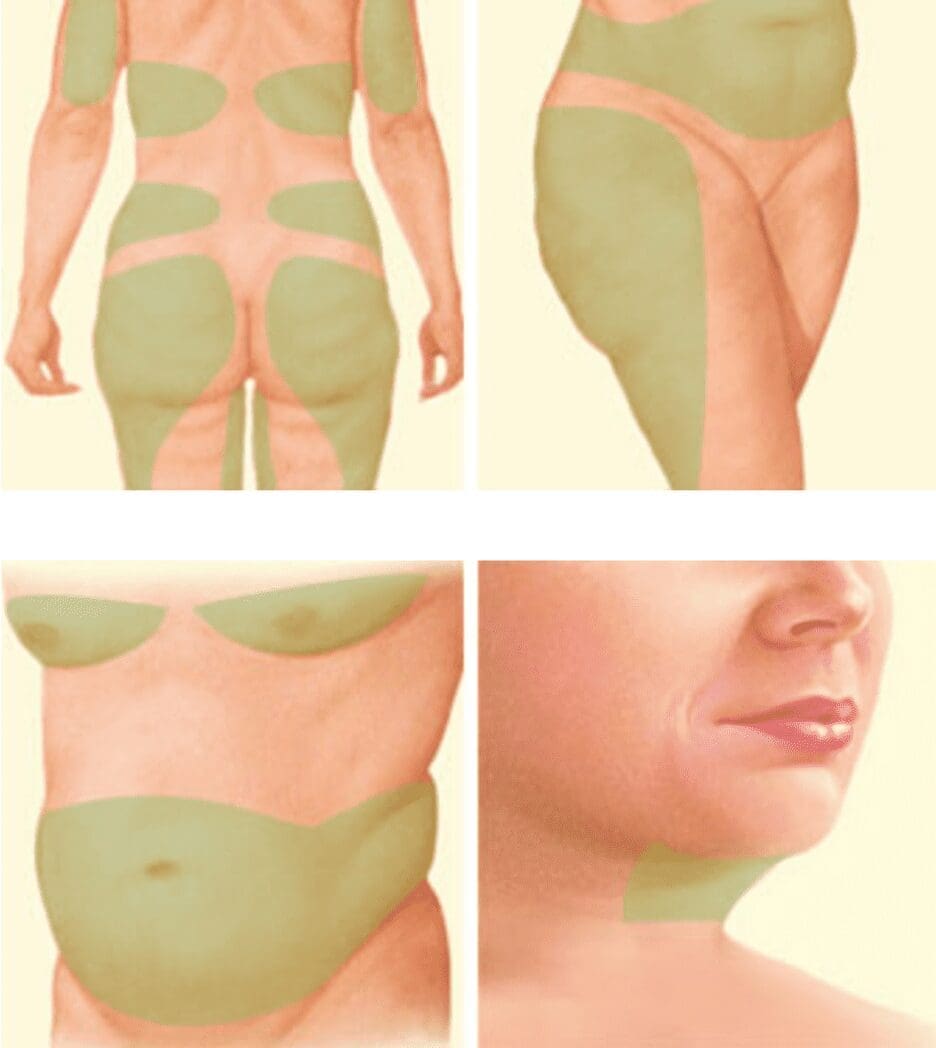 DIFFERENT TYPES OF LIPOSUCTION:
DIFFERENT TYPES OF LIPOSUCTION:Liposuction, or “suction-assisted lipoplasty,” refers to a procedure where fat cells are suctioned out of the body through small access points using a cannula that is attached to suction. That is probably the most basic description of “conventional liposuction.” There are, however, a number of other types of liposuction that most people have heard about, which use ultrasound, laser, heat, radiofrequency, and other additional treatments along with suctioning out fat cells. Then there are techniques, such as high-definition and other terms that are simply proprietary labels that companies have put on their different versions of the above, many of which have never been shown to be different than other versions of liposuction. So how does one make sense of it all? Well, the truth is probably that there are some benefits from additional variants of the “normal” liposuction, but like a lot of things, it’s not the variant that is important but the fundamentals that make a bigger difference.
Some of the fundamentals that make liposuction results best include the use of appropriate amounts of wetting solution, which is the fluid that is injected to get the fat cells out. This must be measured for safety, because this solution has medication in it that must be proportioned to each patient. The cannula that is selected is also important, because too large a cannula could cause contour problems. Using multiple access points allows for crisscrossing the pattern of fat removal for a smooth result. Also, keeping in mind how much removal a patient can tolerate safely during a given liposuction treatment is important, as there is fluid shift experienced by the patient. Many states limit a maximal amount of liposuction during one session to certain maximums to minimize complications. The anesthetic is also important, since liposuction can often be safely performed either under general anesthesia, moderate or “twilight” anesthesia, or awake with local anesthesia. Most often liposuction is performed under general anesthesia, and this is also a mark of accredited surgical facilities if they offer this option.
So before getting confused by trade names like “TriSculpt” or “Micro-Body Contouring” or “AirSculpt,” focus instead of the fundamentals, experience, and how much of connection you form with your surgeon during a consultation. These terms are generally not validated in any peer-reviewed literature, so may mean very little for the result that is achieved for you in your procedure.
Liposuction can treat the abdomen, hips, flanks, back, arms, legs, neck and other areas of the body. It is used as both an independent treatment as well as in conjunction with other treatments, such as during a “lipoabdominoplasty” or using liposuction as an adjunct treatment to harvest fat during fat grafting (e.g, a “BBL” or Brazilian butt lift), or in contouring areas of the body adjacent to the primary surgical area. Most liposuction procedures are performed in ambulatory surgical centers with same-day discharge and recovery at home. It is common to have fluid drainage, swelling, and bruising, but the recovery is generally well-tolerated. Fat removal from liposuction is permanent and will not cause accumulation of fat in other areas. Contour garments, postoperative optimization of nutrition and judicious exercise, and toning efforts further enhance results.
If you would like to learn more about liposuction, reach out to us at Pacific Sound Plastic Surgery by emailing Info@PacificSoundPlasticSurgery.com or by calling 425-818-8991 to schedule a consultation.




